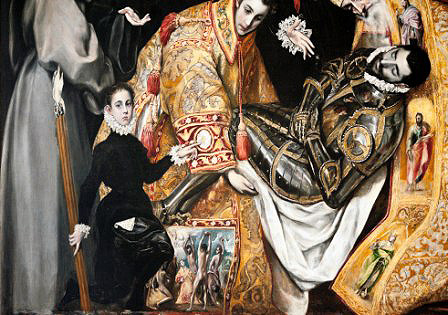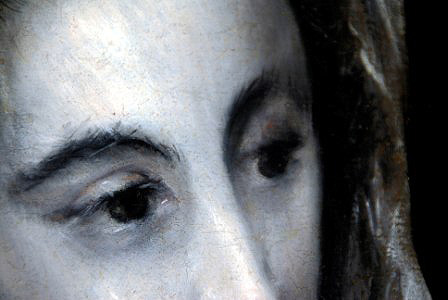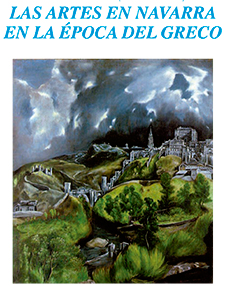AROUND THE 4TH CENTENARY OF EL GRECO (1541-1614). THE ARTS IN NAVARRA IN THE AGE OF EL GRECO
September 3, 2013
El Greco in his IV centenary
Ms. Ana Carmen Lavín Berdonces. Director of the El Greco Museum
Since the death of El Greco in April 1614, his art gradually fell into oblivion. His colorful and elongated compositions ceased to be to the taste of his contemporaries who turned their eyes towards more realistic and closer works, until they ended up cornered in the most absolute contempt and incomprehension. El Greco would become a cursed painter, forgotten, extravagant and crazy, creator of a hallucinated and deformed art, undeserving of programs of study and exhibitions until 1908, when, as a result of the complete study of his works by the professor of the Institución Libre de teaching -Bartolomé Cossío- and the exhibitions that were organized, he would begin to attract the attention of artists and scholars who rediscovered in his painting the most avant-garde techniques and the most disparate readings.
This resistance to the consecration of the Cretan as one of the great geniuses of painting would be overcome over a period of twenty years, and the flagship of Spanish museums, El Prado, would end up dedicating a conference room to the Greek in 1920, in response to the insistent requests of critics, artists and intellectuals; By then the Museo del Greco in Toledo, built expressly by the Marquis of Vega Inclán to honor the painter, was already ten years old and celebrated the painter as the great Spanish artist par excellence.

El Greco. The burial of the Count of Orgaz. Detail
Church of Santo Tomé (Toledo)
In the consecration of the painter, the city of Toledo and its cultural environment played an important role, masterfully described by the illustrious writer and columnist from Navarre Félix Urabayen from the Hotel Castilla, where the best painters of the time (Regoyos, Beruete, Andrade, González Bilbao, etc.) and all the illustrious travelers who visited the city met on the third floor.
The homage of 1914 was confined to the city of the Tagus with hardly any echo in the rest of the country, but it served to institutionalize the Greek within the academy and consecrate him as a great genius of universal painting. Of all this, 100 years have passed, and as in Gardel's tango, "Volver", we return to the same landmarks, the same places, the same museums. In 2014 we will commemorate the IV centenary of his death, with exhibitions, programs of study and congresses. What vision will we give of the Cretan in the 21st century, will we turn him into a champion of nationalism Spanish, an icon of Toledo, an extravagant child of postmodernist individualism, a national myth, a universal myth? The eternal Greek myth, in its renewed sanctuary-museum, will be once again enthroned in the sacred landscape of Toledo.

El Greco, Veronica. Detail
(Museum of Santa Cruz. Toledo)
PROGRAM
Tuesday, 3rd September
El Greco on his 4th Centenary
Ana Carmen Lavín Berdonces. Director of the El Greco Museum
El Greco and Toledo
Ms. Ana Carmen Lavín Berdonces. Director of the El Greco Museum
Wednesday, 4th September
Of patrons and artists
D. Ricardo Fernández Gracia. Chair of Heritage and Art of Navarre
Juan de Anchieta: a genius of sculpture
Ms. María Concepción García Gainza. Chair of Navarrese Heritage and Art
Thursday, 5th September
Rolan Mois and the beginnings of Counter-Reformation painting in Navarre
Mr. Jesús Criado Mainar. University of Zaragoza
The silversmith Velázquez de Medrano and micro-architecture in silver
D. Ignacio Miguéliz Valcarlos. UNED Pamplona

